I plan to post time lapse videos as they become available in the hope that others will find value in them. The comments of others may bring more things to light as we contemplate together. It is hoped that the visual data may help build some sort of consensus. Your are urged to share your opinions. The videos may become repetitious, but they will be posted for those that are interested.
When viewing various bakes below, keep in mind that the doughs vary in formulas, from 100% white flour to a combination of white flour and whole grains and also highly seeded loaves. Keep that in mind, since the ear, bloom, and oven spring will be greatly affected by the make up of the dough.
When judging the crumb, it is useful to know that my goal is Lacy Honeycomb crumb. Big holes are not my jam. Once I am satisfied with the E, B, & OS, the focus will be towards the crumb. I’ve got a lot of work ahead for me.
For those that are interested in the baking aspect of bread, you would do well to study these 2 works by our own Doc.Dough. Doc’s video on slashing is second to none.
Debunking the Wives Tale about Steam
In-Oven Slash Dynamics Video
For the best possible view, use the text link above each video. Maximizing the video will provide more detail and at times, using the "Playback Speed" function to slow down the video is an extremely handy tool.
Debunking the Wives Tale about Steam
In-Oven Slash Dynamics Video
For the best possible view, use the text link above each video. Maximizing the video will provide more detail and at times, using the "Playback Speed" function to slow down the video is an extremely handy tool.
Video # 11-19-19
Comparing 2 doughs baked on the same stone at the same time. One covered with no additional steam and the other, 90 seconds of externally injected steam.
For a better viewing experience use this link.
These breads are Hamelman’s Five-Grain Levain. The formula calls for ~34% seed and cracked grain soaker. A dough with large percentages of add ins like this will challenge the strength of the gluten.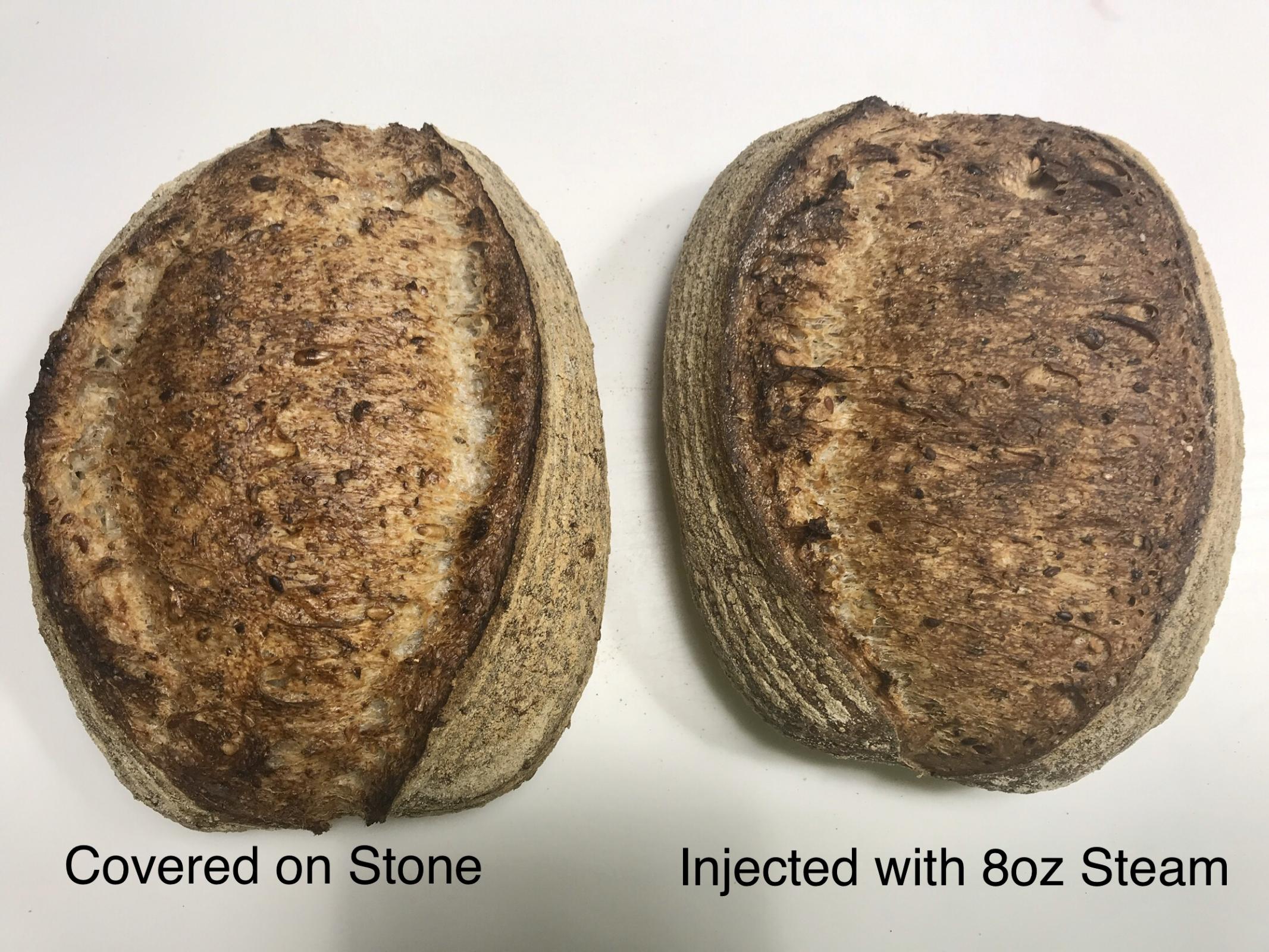
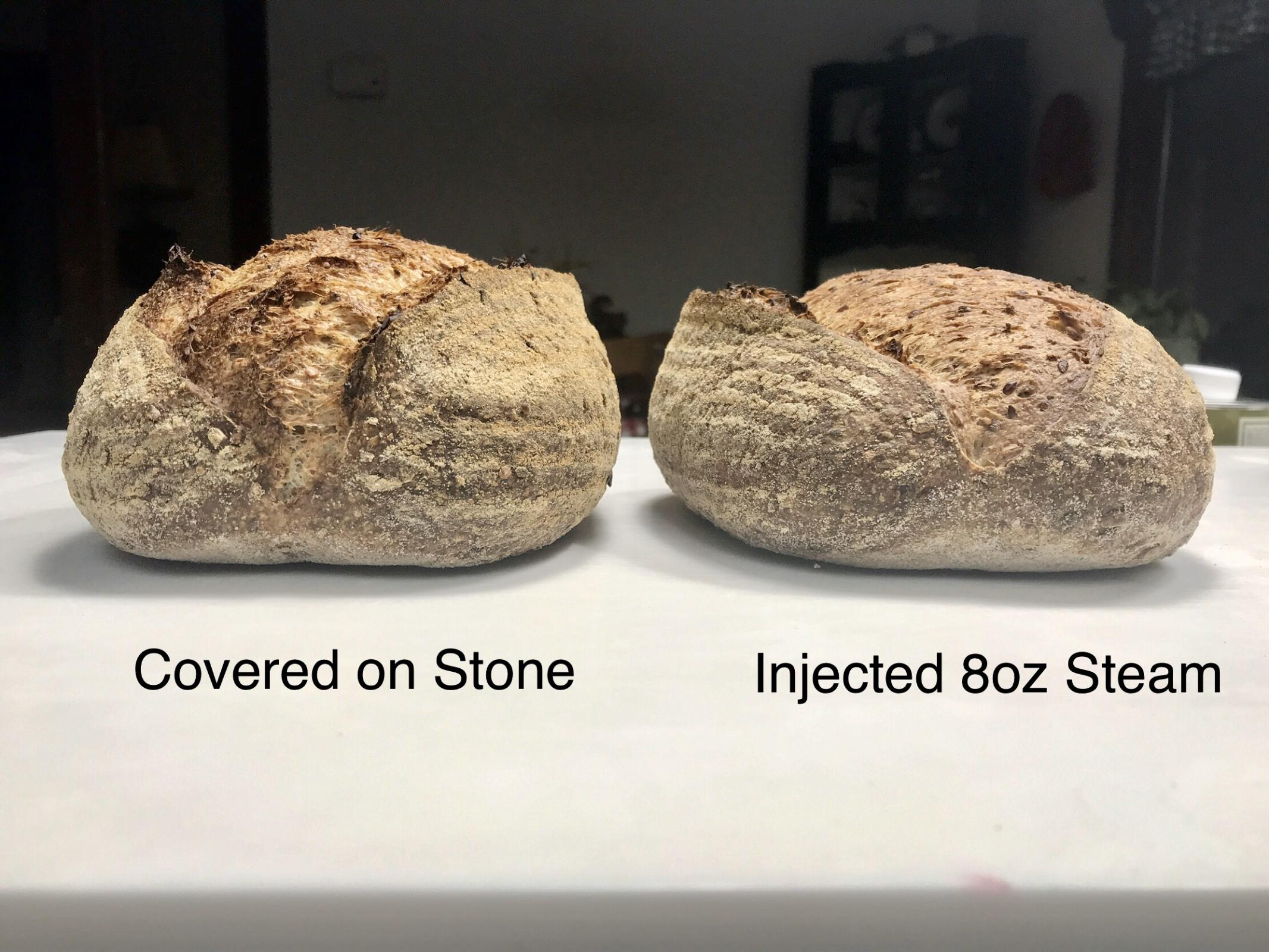
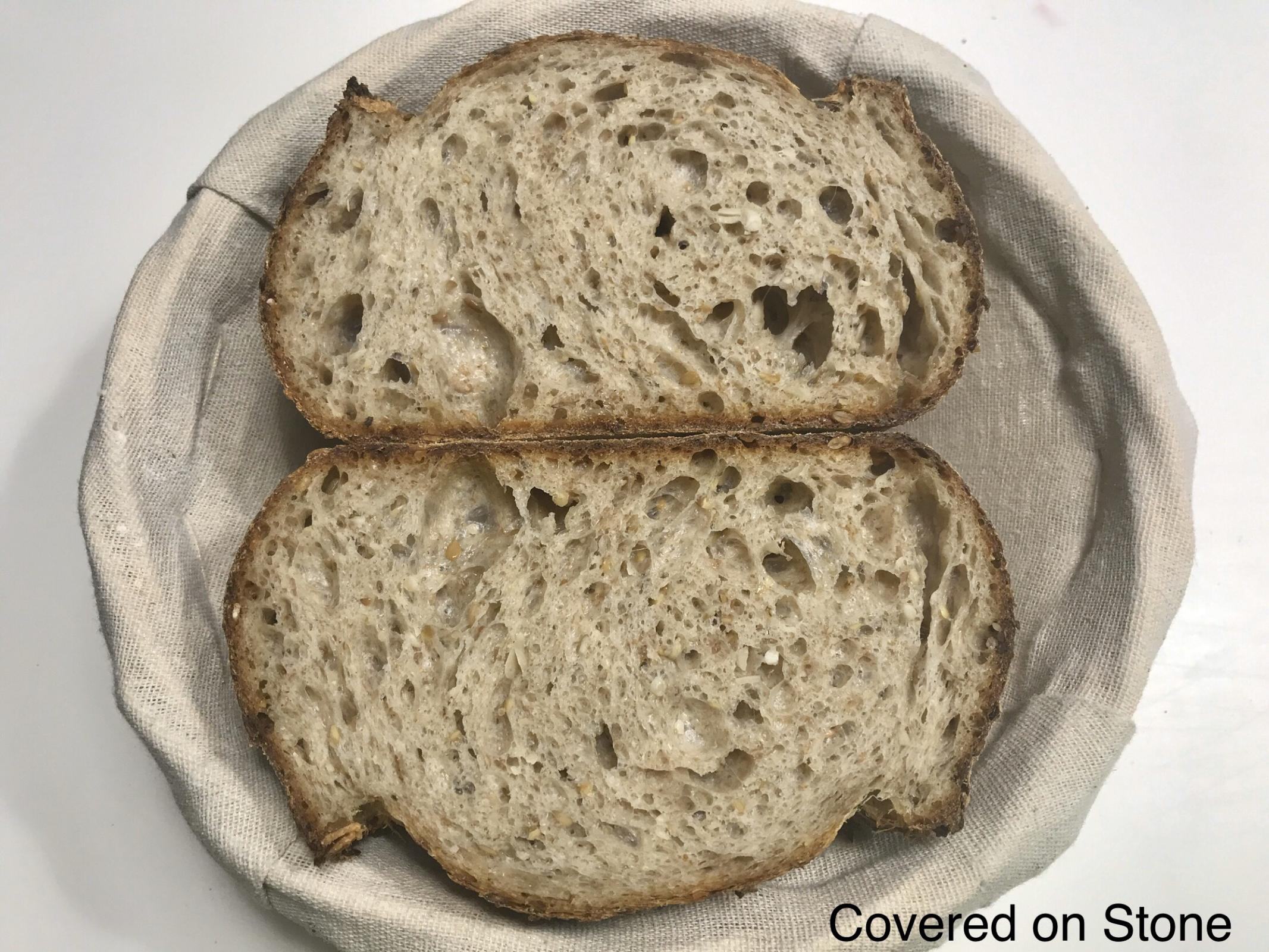
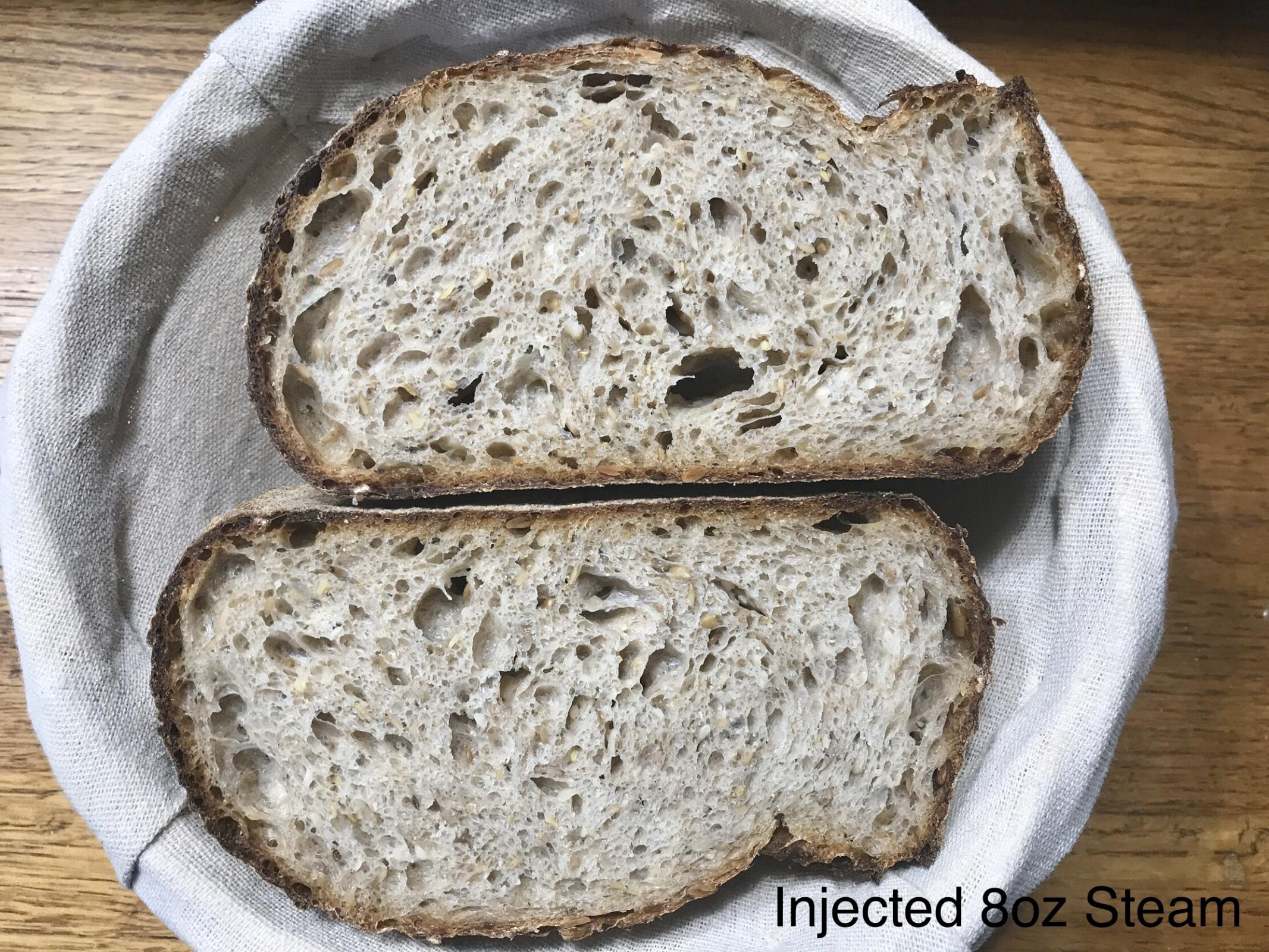
Video # 11-10-19
What happens when things go wrong? Why do ears sometimes "glue down" on the bread crust?
For a better viewing experience use this link.
I would imagine that at one time or another, all bakers scratch their heads, asking the same question. "Why did the ear(s) not rise, but "glued down" to the loaf?
Video # 11-05-19
For a better viewing experience use this link.
This bake turned out fair, but I was hoping for a larger ear, and more oven spring. I am not sure what prevented my expectations. I didn't think the dough was over proofed but that may provide the best explanation.
Video # 11-01-19
For a better viewing experience use this link.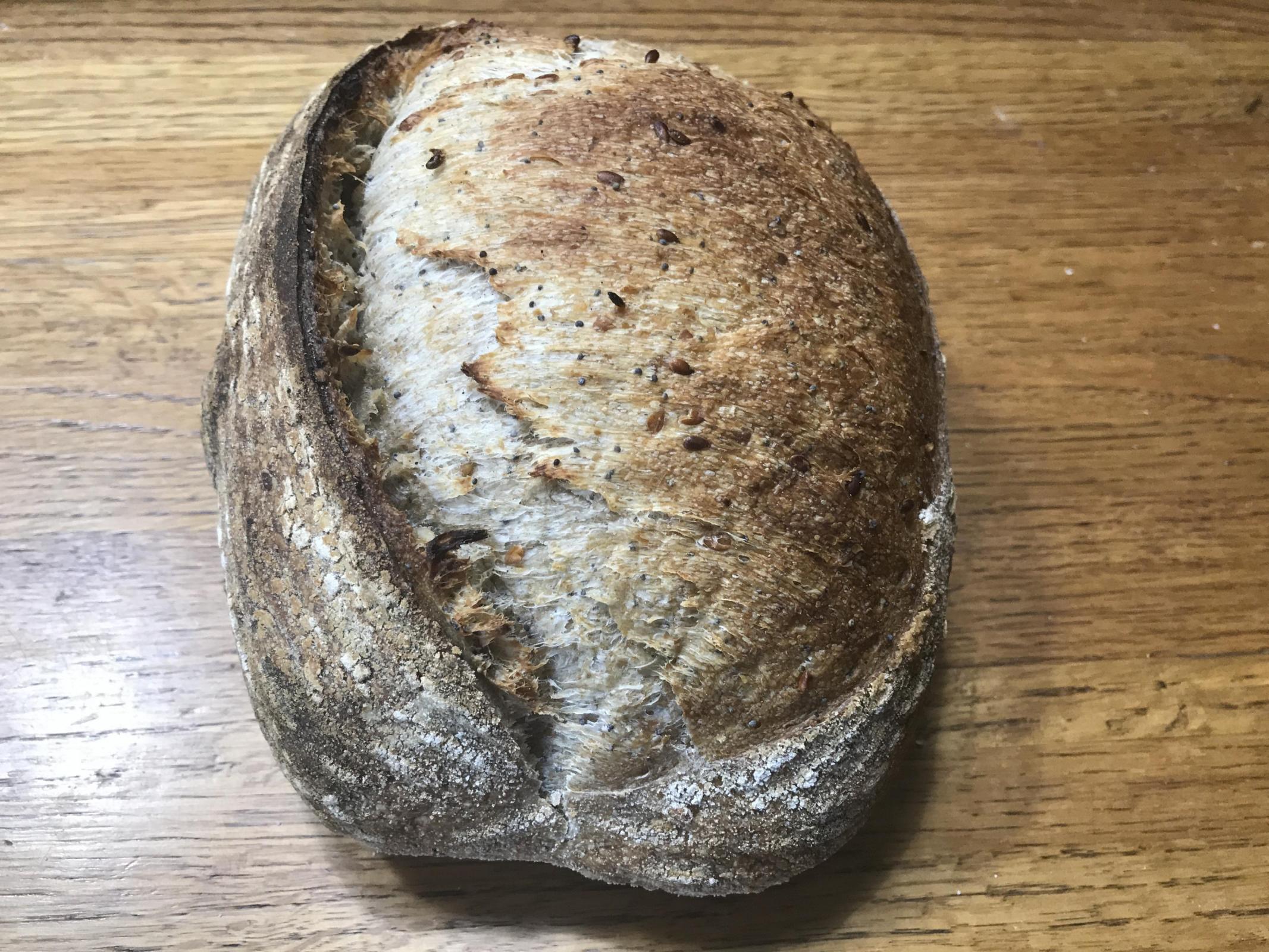
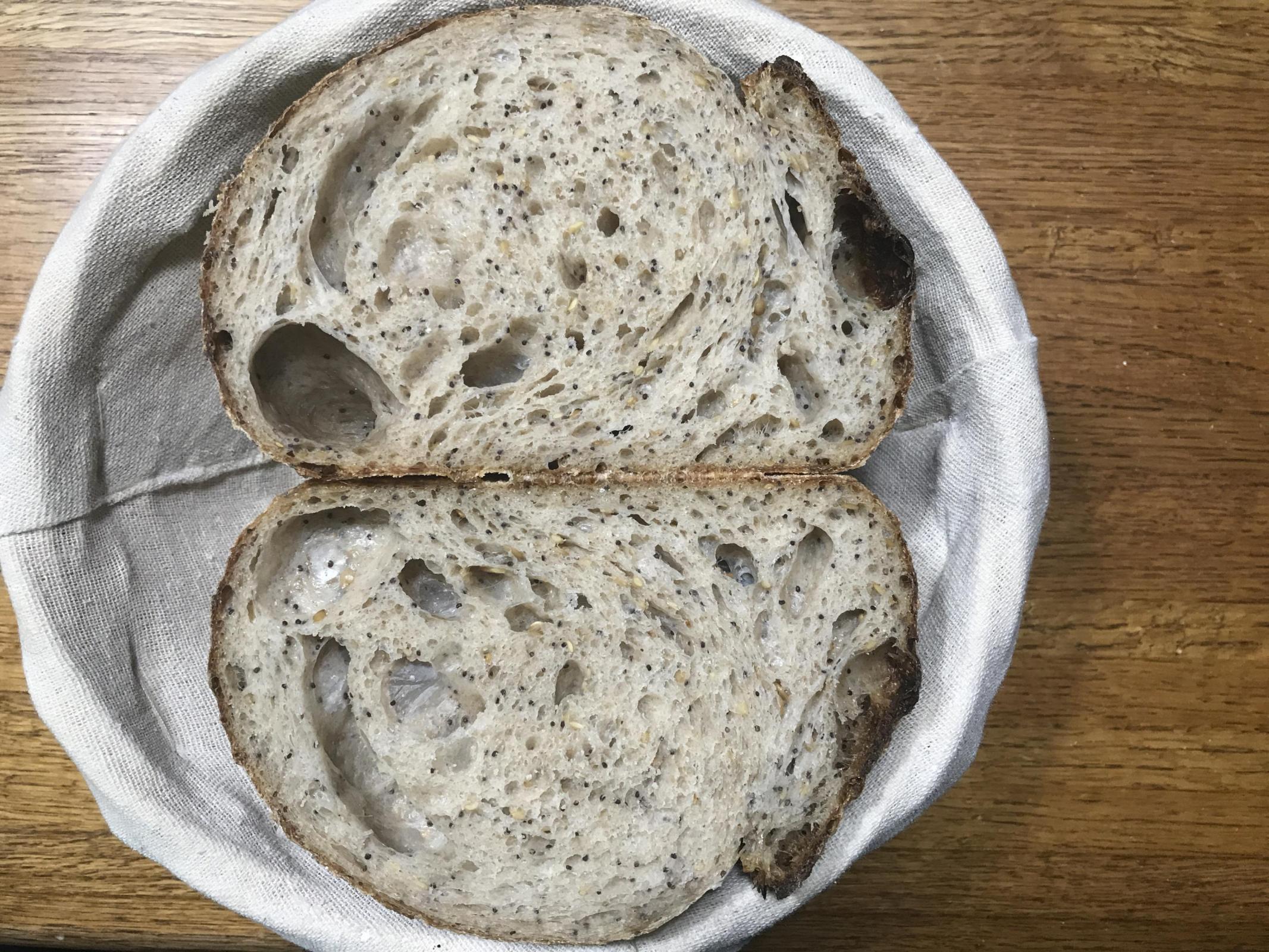
Video # 10-29-19
For a better viewing experience use this link.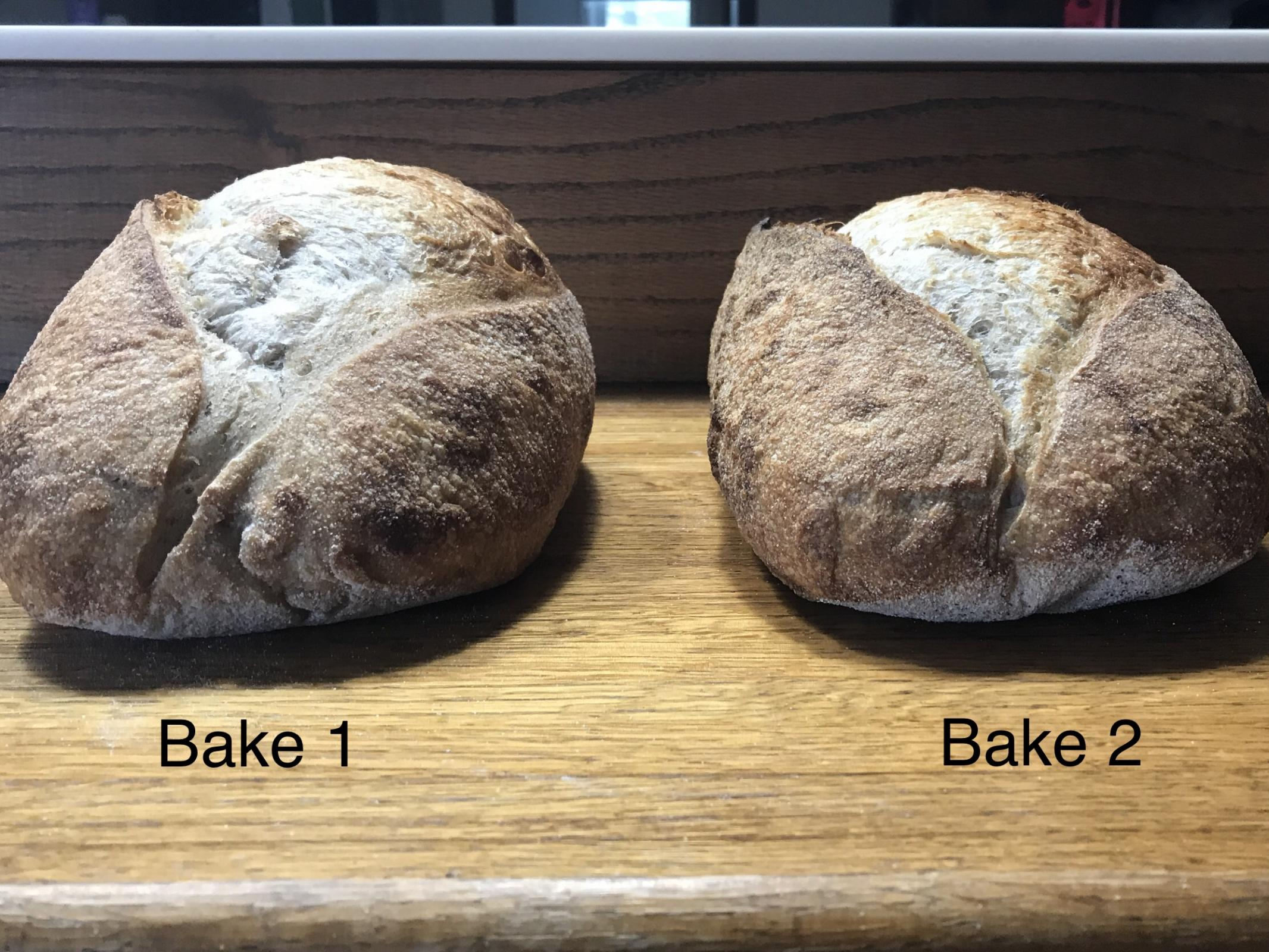
The size of each crumb shot can be misleading. The zoom affects the appearance of size.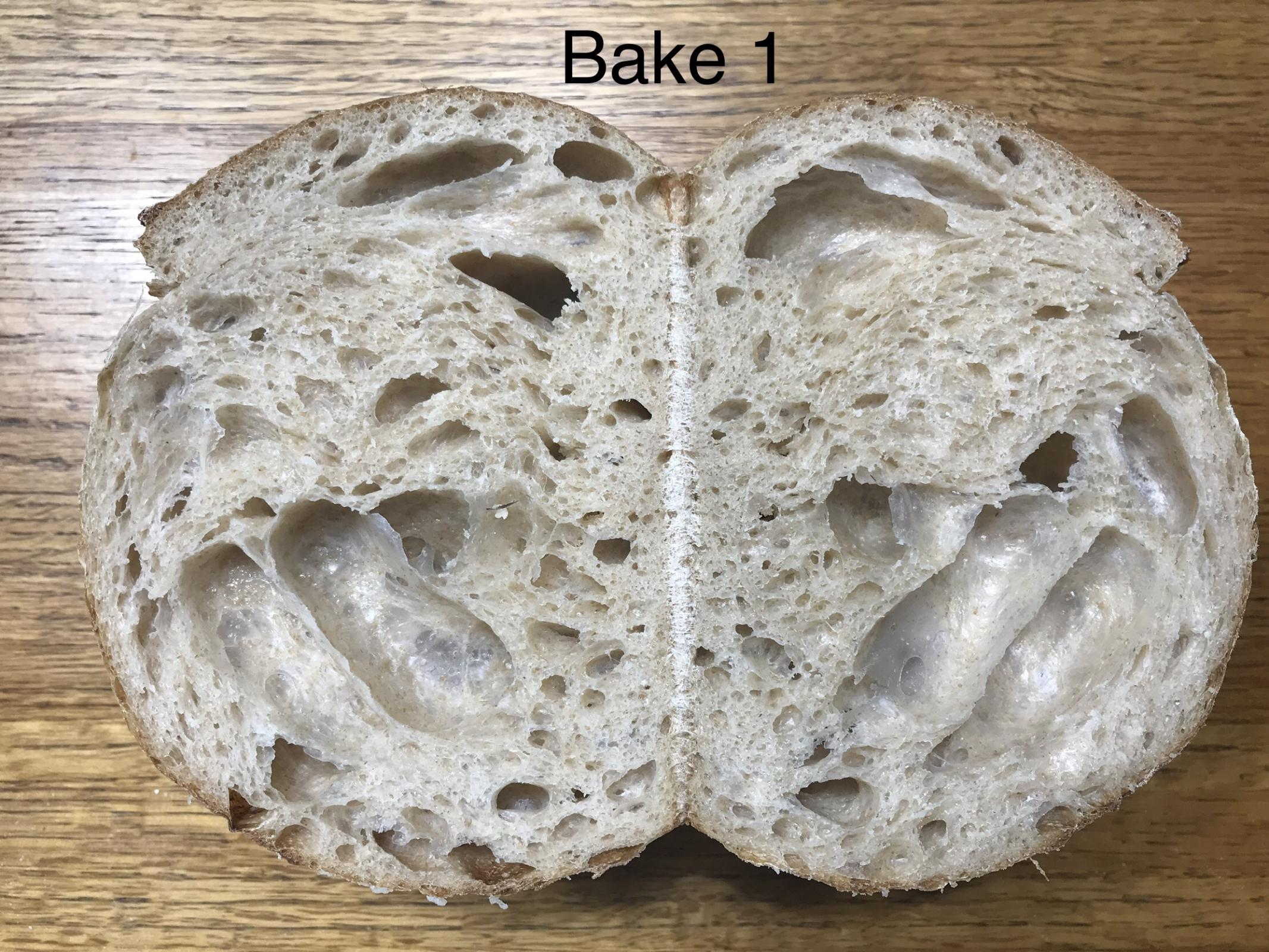
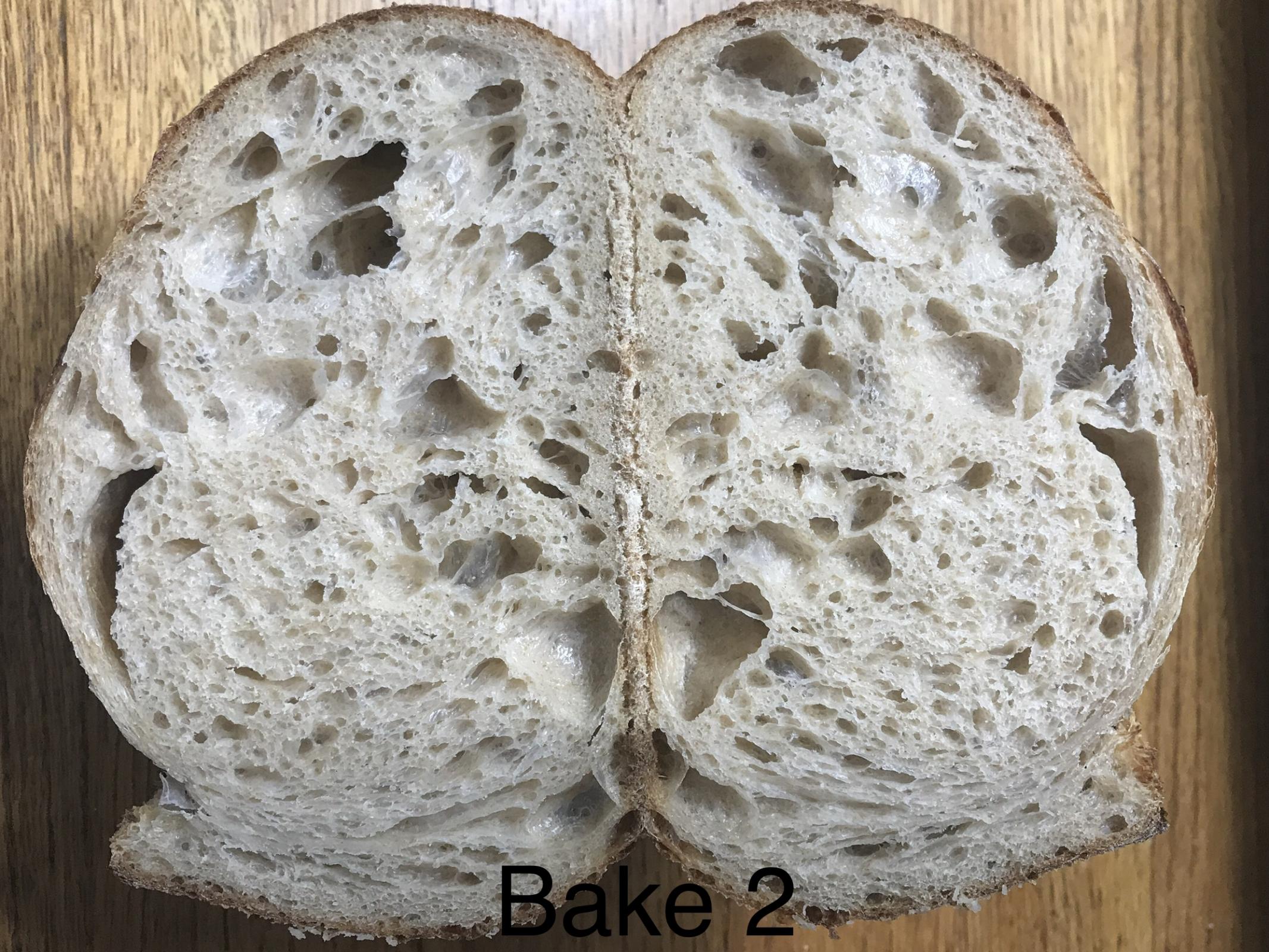
Video # 10-25-19
For a better viewing experience use this link.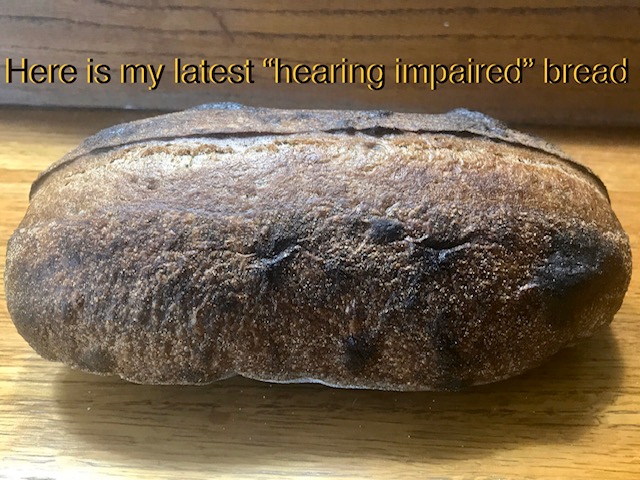
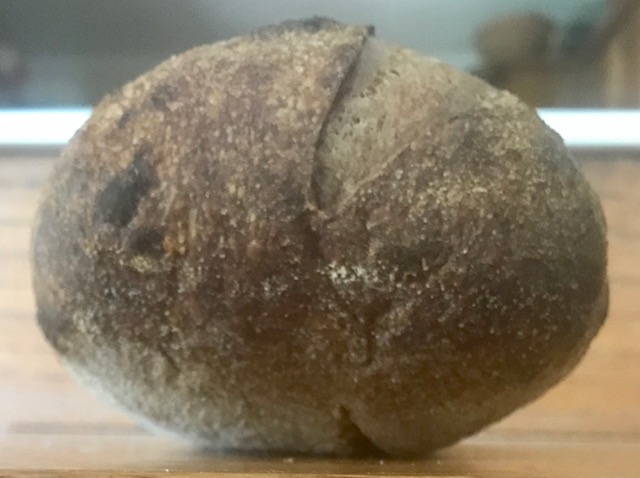
Danny
e: 0.9em;">Video # 11-19-19
Comparing 2 doughs baked on the same stone at the same time. One covered with no additional steam and the other, 90 seconds of externally injected steam.
For a better viewing experience use this link.
Video # 11-10-19
What happens when things go wrong? Why do ears sometimes "glue down" on the bread crust?
For a better viewing experience use this link.
I would imagine that at one time or another, all bakers scratch their heads, asking the same question. "Why did the ear(s) not rise, but "glued down" to the loaf?
Video # 11-05-19
For a better viewing experience use this link.
This bake turned out fair, but I was hoping for a larger ear, and more oven spring. I am not sure what prevented my expectations. I didn't think the dough was over proofed but that may provide the best explanation.
Video # 11-01-19
For a better viewing experience use this link.

Video # 10-29-19
For a better viewing experience use this link.
The size of each crumb shot can be misleading. The zoom affects the appearance of size.

Video # 10-25-19
For a better viewing experience use this link.

Danny
Hi Dan. I'm very happy for your progress. Indeed baking can ruin a dough that has been well worked. Taking this into account, I will put another card in the deck. I have an industrial turbo oven. It is electric and the heater only works when the turbine is on. It has steam injection system. No bread develops in that oven. We are considering installing a separate switch to turn off the turbine, because even with a saturated steam chamber, no mass develops. I'm pretty sure the wind dries the breadcrumbs and prevents the initial burst from opening.
So exciting to see that you've figured it out, Dan!! Such a simple rationale and solution :) Beautiful oven spring, gorgeous ear!
can you please cut through the loaf completely to reveal the bottom crust? I know that leaving a "hinge" on the bottom while cutting makes it easy to line up the surfaces for the picture but if you could cut through, I can "read" the crumb better. Thanks.
Try using a toothpick or two hidden in the sides to line things up or a nest of dishtowel if needed. I've noticed this "hinging" catching on with other members pics and find it leaves out some important info on the bottom crust.
Ears, can you do a pic or video close up of your actual scoring motion? I'm seeing the blade turn more perpendicular that I think you want right at the moment of scoring. Something that helped me a lot was thinking of not just scoring at an angle but think more in terms of flaying, trying to take the skin off the one side as you cut. (If it screams you have my permission to beat the crap out of it.) Try to lift off one side like trying to lake off just part of the thickened skin. Get that blade almost flat on the surface. See if that makes a difference. :)
This goes out to our favorite gal, Mini. By special request.
For best viewing use this link.
By the way, the ear on this loaf bombed. I did promise, "the good, the bad, and the ugly". AND I did say, "we learn more from our failures than we do from our successes".
I’ll try to remember to cut the loaf completely in half.
Images and details soon to come...
Danny
Mini, take a look at this section of this post. It may provide some useful information.
Danny
Just wanted to throw out some ideas to try.
A deeper slash that is more off center and angled towards the shorter side.
A taut skin on the dough will usually produce ears. Perhaps shaping is the issue.
The crust on your breads look dull and uneven with no blisters, like there was no steam. There is no shine to it at all. Does it look different right out of the oven? As a reference I would try baking a loaf covered in a cloche or dutch oven to see if there is a difference.
Judging the crumb it seems that the proofing is in the ballpark. Something is amiss in your oven have you checked the temp with an oven thermometer?
The problem is only with super wet dough. I do pretty good with dough at 77% or less.
Danny,
Did you end up getting a good ear with this loaf?
Ilene, this loaf was a flop as far as ears are concerned. But I have had great success lately with 80% as and even higher. I think the main problem was overheating the crust prematurely. Once that happened the crust hardened and couldn’t expand anymore or fracture.
I am starting to wonder if higher hydration doughs should be baked at lower initial temps. Maybe the gross amount of internal steam is rising through the crust, causing premature browning. At this time it is only a theory.
I've enjoyed reading and learning through your experimentation as I've been struggling lately too. My ears/scoring have gone from nonexistent to pretty good back to meh.
I've definitely noticed on a few very wet doughs that I couldn't get the skin tight enough so the loaves opened in various places and not just where I scored. I think going forward I might bake these loaves seam-side up and not score. I've also been pushing my fermentation longer as I feel like I was underproofing so my ears probably can't be expected to be as good. I appreciate your scientific approach to searching for answers!
Ilene, over proofing will not be best for ears. Without huge oven spring, great ears are not possible. If the dough is over fermented it’s ability to produce future gas will be negatively impacted. My successes lately have come from erring on the side of under proofing.
I now believe that what most bakers call ”under fermented” is closer to properly proofed. When my thinking changed, so did my breads...
Take a look at this video. While viewing it keep the mind set that you are watching the rise of bread dough. It is not a starter, it is a dough. Notice what happens when the dough reaches it’s highest level? Is it able to produce and HOLD more gas? Imagine what would happen to that dough if it was baked at the end of the video. New Thought - Imagine how much reserve gas would be available if the dough was baked after it had risen 30-50%?
Danny
Yes, that's exactly what I said. I am been more fully proofing lately and therefore have had less oven spring than previously.
Ilene, sorry I think I mis-read your comment about under/over proofing.
If your wet doughs are opening at places other than the score, it probably isn’t due to a loose gluten skin. It seems a loose skin would allow more expansion, not less. My best guess is either a weak gluten skin or seams that have not stuck together.
what do you think?
Danni (not Danny) is the master of seam up baking.
I always assumed the openings (at places other than the score) were because I had difficulty doing a good job shaping because the dough was so hard to handle. I guessed, maybe incorrectly, that a weakly shaped dough wouldn't have enough tension in the skin and could open willy nilly! From what you're saying this is probably flawed logic. I don't know enough about the issue of weak gluten skin and what causes it.
Or, as you suggest, perhaps poor shaping means the seams can open more easily.
Is it possible that if one doesn't score deeply enough that the crust will open elsewhere?
Ilene, I have no explanation for the cracks in the crust in your image. Maybe someone else has seen this and knows the cause.
Danny